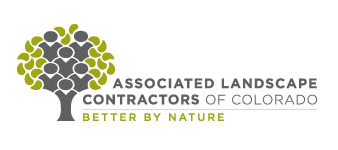| Colorado water communities unite to create new water ethic |
 |
| Written by Frank Kinder |
| Tuesday, July 09, 2024 12:00 AM |
|
As the headwaters state of the West, Colorado’s identity is deeply tied to its landscape and especially to its water. Its snowy peaks serve as the beginning of a water supply sustaining life for over 40 million people across seven states. The winter snowpack tests skiers’ skills, and spring’s rushing rapids thrill boats full of excited rafters. In summer, meandering streams hide trout in the shadows, and numerous lakes and reservoirs draw campers, hikers, bikers and boaters. In our cities, water is the lifeblood of schools, restaurants, parks, homes, hotels, industry and, importantly, our public and private landscapes. On the eastern plains, Colorado’s farms raise crops, cattle and other animals of nationally significant value, sustaining rural economies and communities while providing local food to the West. Colorado’s water offers beauty, recreation, economy, solace, food and life. These vast benefits draw people to visit, relocate here and start new businesses. As a result, we are blessed with a bustling economy, abundant recreational opportunities and a high quality of life. And as an increasing population demands more water, a changing climate is stressing the supplies that we and all other Western states rely on. How do we address this quandary? A rich water history The water industry in Colorado is robust and laser-focused on wise management. For educational institutions, entrepreneurs, scientists, landscape companies and all of those who use water, it is an exciting time as new options move the market by offering more choices and opportunities. Federal, state and local entities, often partnering with nonprofits, invest significantly in new supplies while concurrently protecting and ensuring maximum efficiency of those that already exist. Advancing water security For decades, Colorado’s landscape industry, water providers, universities and policy makers have been collaborating on how to do more with less. We are leaders in creative new ideas and economies to help ensure sustainable use for those who are here now and those who will be in the future. Examples include delivering new plants, trees, turfgrasses, landscape designs, and irrigation products and practices that minimize water use and precisely deliver and monitor it. Creating the future A few of our many successes include the Plant Select program, Rachio controllers, DogTuff Grass, new social constructs such as xeriscape in the 1980s and Coloradoscape today. Innovations such as urban native grass transitions, water budgeting, turf-free front yards, and integrating water efficiency into land use planning are ongoing. Communicating conservation People relocating to Colorado are often from areas with different climatic conditions and water supply portfolios. As the top of the Western watershed, we have a responsibility to manage our variable water supplies and to help our users be successful in their water demands. To accomplish this, municipalities coordinate with the Colorado Water Conservation Board to measure water use and pursue ways to manage it across their customers through Water Use Efficiency Plans. To better understand use, metering companies have i proved measuring and communication tools across commercial and residential users. New water-delivery technologies offer fine-grained insight and oversight, giving the ability to de fine and fix leaks, and determine and deliver optimal water use. Examples include controllers, flow sensors, master meters, weather networks, home devices and software portals al lowing water providers, users and contractors to reduce waste and plan for the right amount of water use and investment. Mailers from local water providers provide water-use metrics and comparisons to nearby efficient users, and other bill mailers share available resources such as rebates, irrigation audits, free retrofits and garden discounts. These examples are common measures used in Colorado, especially along the Front Range. EPA’s WaterSense programs commonly bolster this messaging for water users across the country, making participation easy through manufacturers, retailers and industry organizations. Outreach, education and training A bright spot in Colorado’s water efficiency evolution is the collaboration across industries. In the commercial segment, certifications are a path to enhance water efficiency capabilities, and many water providers partner with different organizations to help new and experienced practitioners learn new skills. Hosting classes from the Irrigation Association is a popular way to facilitate maximum irrigation efficiency, while others offer the Qualified Water Efficiency Landscaper program. ALCC’s Sustainable Landscape Water Management is a successful format to deliver holistic plant, soil and water health relationships. For residential and HOA audiences, many water providers offer continuous outreach to engage users in their home and landscape water use. This occurs through classes, tours of conservation gardens, online webinars, hosting booths at public events, and small group consultations. What does the future hold? To face this challenging future, Colorado’s water community is actively creating a new water ethic. This vision will require everyone— landscape contractors, water providers, product manufacturers, landscape architects, plant propagators, non-government and government entities, and an engaged and informed user base—to get involved. Together, we can create this new landscape language that keeps Colorado the amazing place we all love. Read more in this issue of Colorado Green Now: Hot and dry conditions the summer could push the state to drought status Colorado Water Plan initiatives are making water-wise landscapes a reality |


